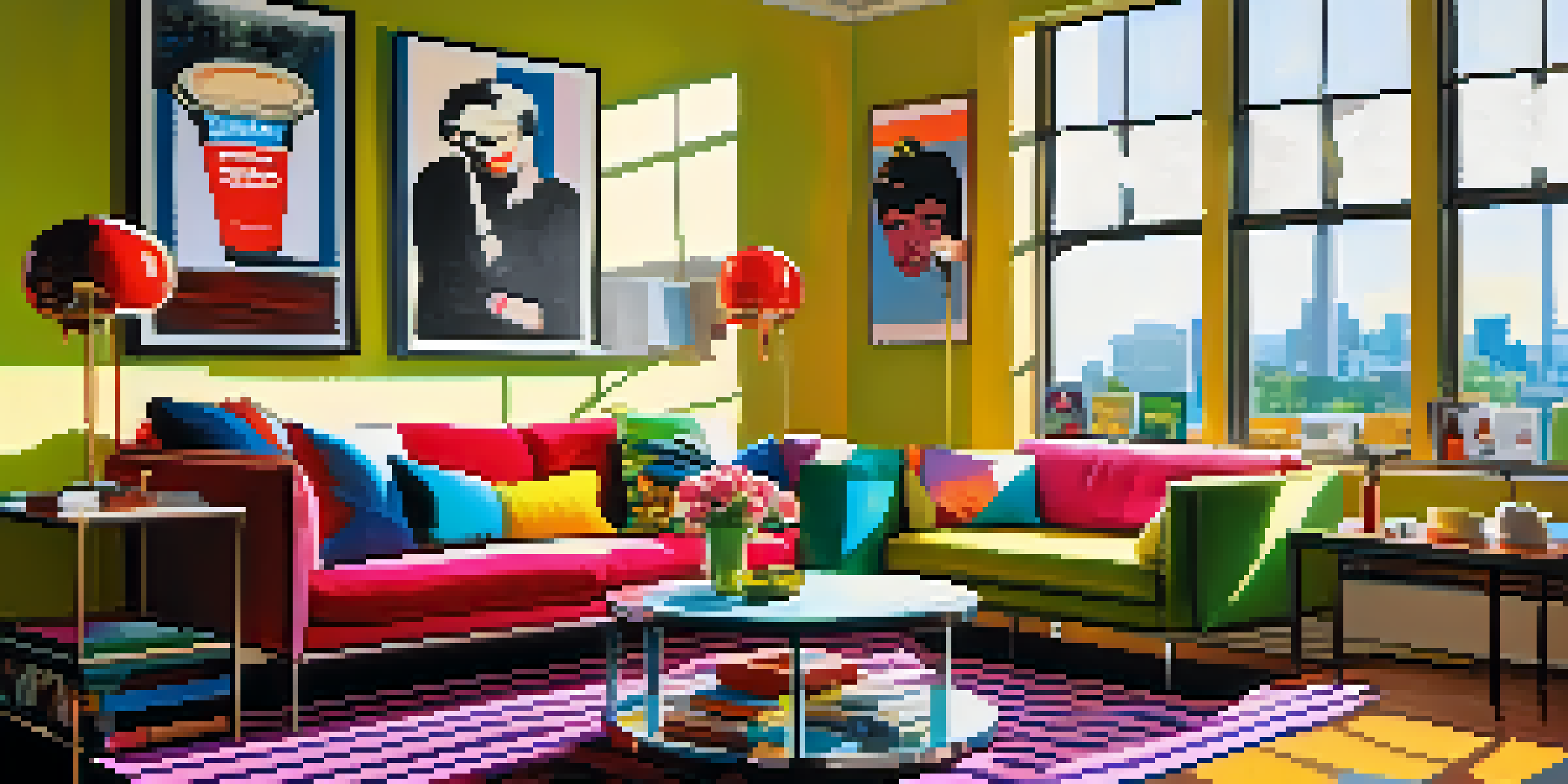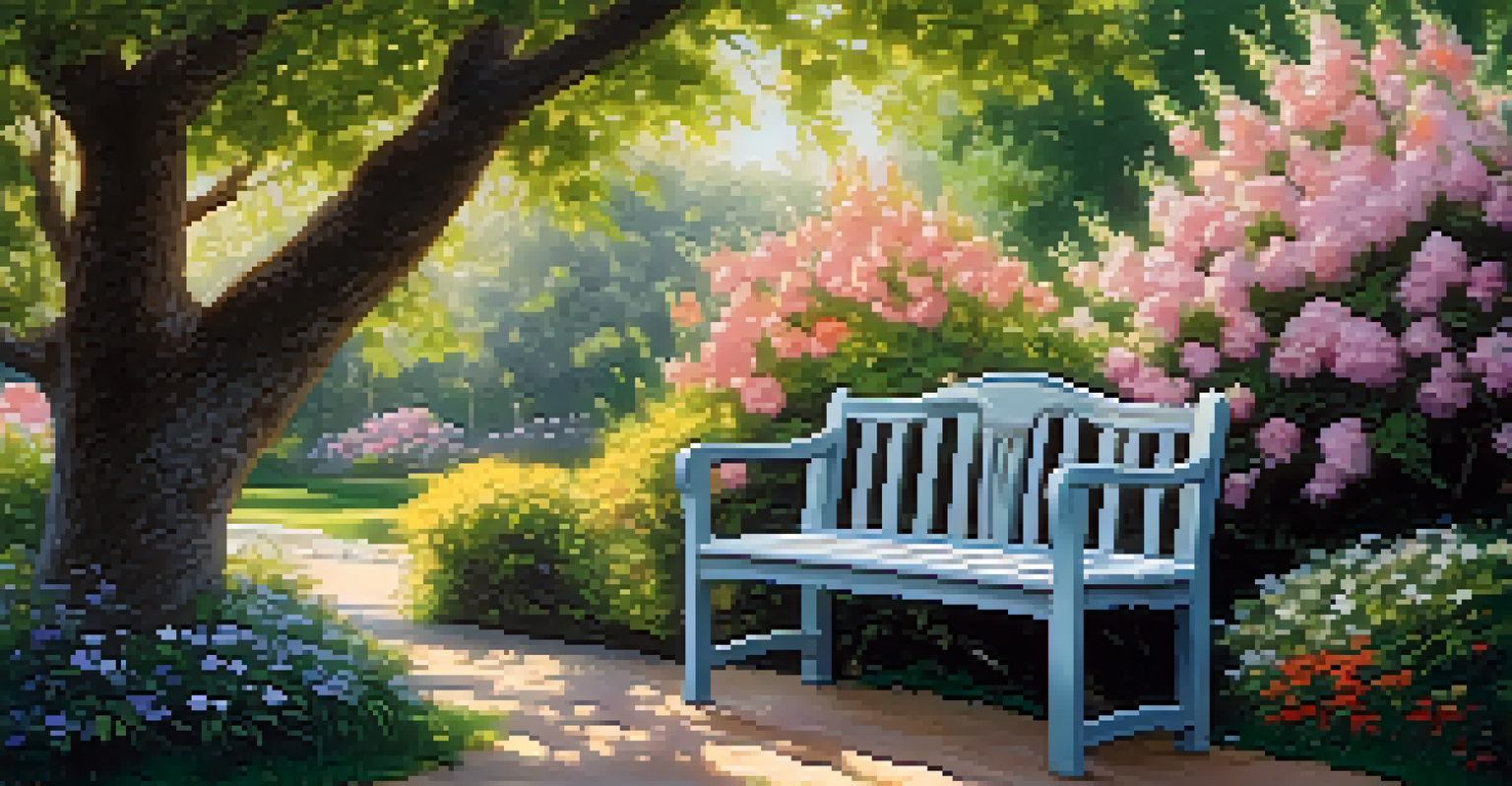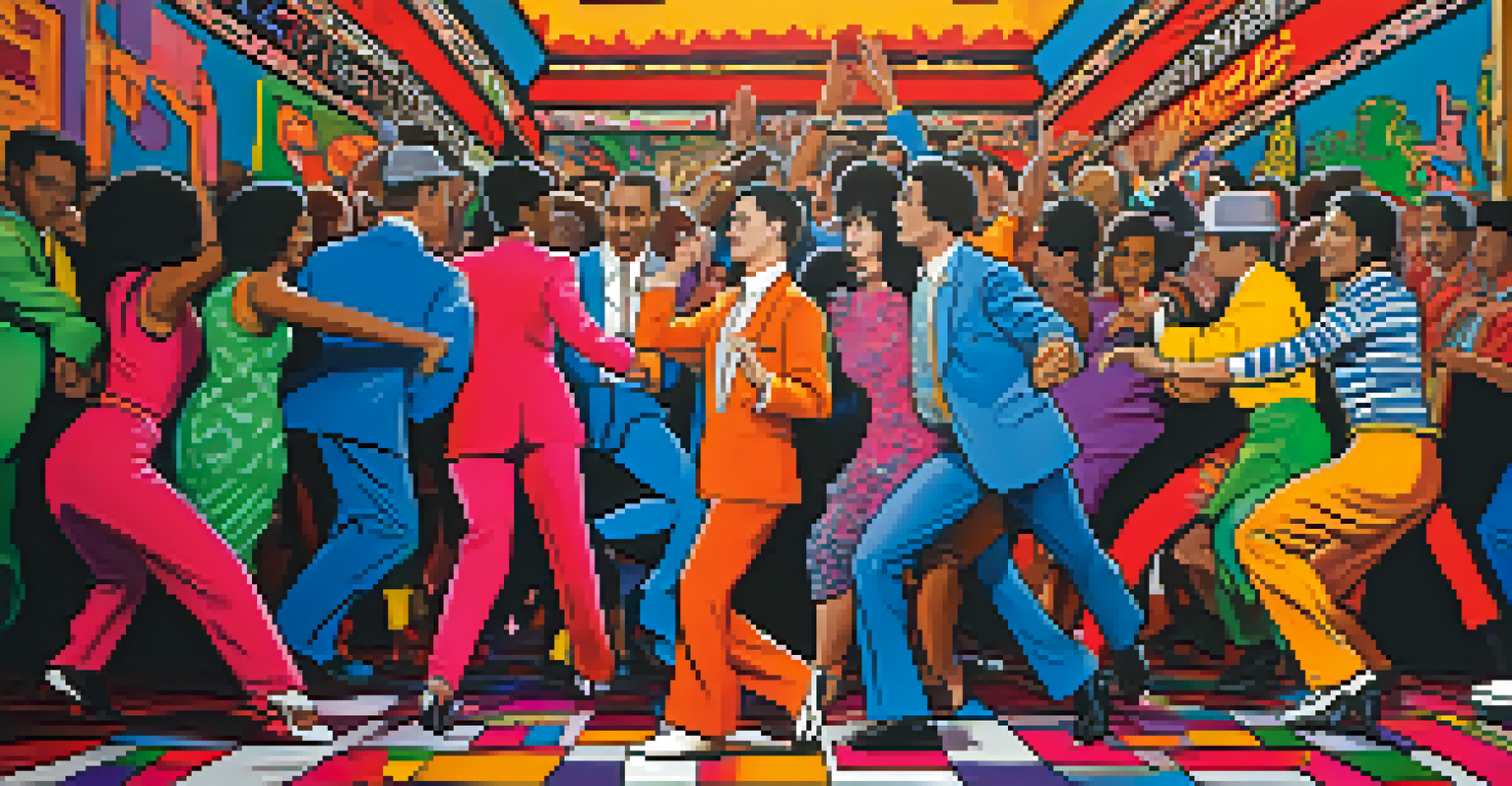Visual Art References in Popular TV Series: A Deep Dive

The Intersection of Art and Television: An Overview
Television has become a powerful medium for storytelling, often borrowing from visual art to enhance narrative depth. The use of art references not only adds an aesthetic layer but also invites viewers to engage more deeply with the content. These references can range from subtle nods to famous paintings to overt homages that shape the show's visual identity.
Art is not what you see, but what you make others see.
Incorporating visual art into TV series allows creators to establish mood, theme, and character development in a unique way. For instance, a scene that mirrors a well-known artwork can evoke specific emotions or memories for the audience. This technique enriches the viewing experience, creating a dialogue between the viewer and the art referenced.
As we delve into various TV series, we'll uncover how these artistic elements resonate with the audience, often leaving a lasting impact. From classical works to contemporary pieces, the integration of visual art serves as a bridge between different cultures and eras, making the stories more relatable and profound.
Iconic Paintings in 'The Simpsons' Episodes
'The Simpsons' is infamous for its clever cultural references, including visual art. One memorable example is the episode where Homer becomes obsessed with the painting 'American Gothic' by Grant Wood. This not only adds humor but also prompts viewers to reflect on the themes of family and work ethic depicted in the original artwork.

The show often parodies famous artworks, like when Lisa recreates works by Van Gogh or Picasso, cleverly intertwining humor with education. These moments serve to introduce viewers, especially younger audiences, to important art history in an accessible manner. The juxtaposition of high art with everyday life cleverly blurs the lines between the two.
Art Deepens TV Storytelling
Incorporating visual art in television enhances narrative depth, creates emotional connections, and invites audience engagement.
By embedding these references into its storytelling, 'The Simpsons' invites conversations about art and its relevance to modern life. This blend of humor and art appreciation keeps the series fresh and engaging, proving that visual art can thrive in any context, even in animated sitcoms.
Art and Identity in 'Pose'
'Pose' showcases the vibrant ballroom culture of the 1980s and 90s, intertwining fashion, dance, and visual art to explore themes of identity and community. The series often references iconic artists like Keith Haring, whose work symbolizes LGBTQ+ activism, providing context to the struggles faced by its characters. This connection enriches the narrative and highlights the importance of art in social movements.
The best artist has no conception that a marble block does not contain within it the sculpture; it must be released.
The use of bold colors and striking visuals not only represents the characters' personalities but also reflects their inner journeys. For example, scenes that echo Haring's graffiti style mirror the show's themes of self-expression and resilience. This visual language adds depth to the storytelling, making the emotional stakes feel even more poignant.
By weaving art into its narrative, 'Pose' emphasizes how visual culture shapes identity. The characters' interactions with art serve as a backdrop for their personal struggles and triumphs, ultimately showcasing the power of creativity in the face of adversity.
Exploring Surrealism in 'Twin Peaks'
'Twin Peaks' is often celebrated for its surreal narrative style, which draws heavily on visual art, particularly surrealism. The show's creator, David Lynch, uses dreamlike imagery reminiscent of artists like Salvador Dalí to create an unsettling atmosphere. This approach invites viewers to interpret the series on multiple levels, much like a complex painting.
The use of striking visuals, such as the iconic red room, echoes the themes of duality and the subconscious found in surrealist art. Lynch's deliberate choices in color, lighting, and composition encourage viewers to engage deeply with the storyline. Each frame can be seen as a work of art, prompting discussions about meaning and interpretation.
Cultural References in 'The Simpsons'
'The Simpsons' cleverly interweaves visual art references to educate viewers about art history while providing humor and insights into modern life.
Through its artistic references, 'Twin Peaks' challenges traditional narrative structures, inviting viewers to embrace ambiguity. This embrace of the unknown mirrors the experience of viewing surrealist artworks, where meaning is often elusive, thus creating a captivating viewing experience.
The Influence of Impressionism in 'The Crown'
'The Crown' meticulously crafts its visual storytelling, often drawing inspiration from Impressionist art to evoke emotion and atmosphere. The series pays homage to the works of artists like Claude Monet, using soft colors and light to reflect the mood of particular scenes. This artistic choice enhances the historical context, making it feel more alive and relatable.
By incorporating these visual elements, 'The Crown' allows audiences to immerse themselves in the emotional landscape of the characters. For instance, scenes set in lush gardens or serene landscapes mirror the characters' internal struggles and desires. This connection to Impressionism enriches the narrative, providing a backdrop that feels both beautiful and poignant.
Moreover, the show's attention to detail in its cinematography creates a visual feast that resonates with art lovers. By blending historical events with artistic inspiration, 'The Crown' not only tells a story but also invites viewers to appreciate the beauty of art and history intertwined.
Pop Art References in 'Mad Men'
'Mad Men' offers a fascinating glimpse into the advertising world of the 1960s, intertwining visual culture with its narrative. The series frequently nods to the Pop Art movement, reflecting the era's cultural shifts and consumerism. From Andy Warhol’s iconic Campbell's Soup cans to Roy Lichtenstein’s comic-style art, these references enhance the show's exploration of identity and commercialism.
The characters' interactions with these artworks often serve as commentary on their own lives and aspirations. For example, the use of vibrant, bold colors in the set design mirrors the Pop Art aesthetic, creating a visual connection to the themes of superficiality and facade. This clever integration invites viewers to reflect on the impact of art in shaping societal values.
Visual Art Shapes Identity in 'Pose'
'Pose' uses iconic art references to explore themes of identity and community, enriching its narrative with cultural significance.
Through its art references, 'Mad Men' not only captures the essence of the 1960s but also highlights the enduring relevance of visual culture. By examining how art influences personal and societal narratives, the series creates a rich tapestry that resonates with audiences, making it a compelling study of both art and life.
Cinematic Homages in 'Stranger Things'
'Stranger Things' is well-known for its nostalgic references to the 1980s, but it also pays homage to visual art, particularly cinematic styles. The series incorporates elements reminiscent of famous filmmakers like Steven Spielberg and John Carpenter, blending horror with a sense of wonder. This homage to visual storytelling invites viewers to consider how art influences narrative techniques in television.
The show's vibrant color palette and atmospheric visuals echo the stylings of classic horror films and posters, creating a sense of familiarity for viewers. For instance, the use of neon lights and vintage aesthetics evokes a nostalgic yearning, drawing parallels between the show's visuals and the art of the past. This clever integration enhances the emotional stakes of the narrative.

By weaving these artistic influences into its narrative, 'Stranger Things' not only entertains but also inspires a deeper appreciation for visual storytelling. The interplay between television and art encourages viewers to see their favorite shows through a new lens, fostering a richer understanding of the stories being told.